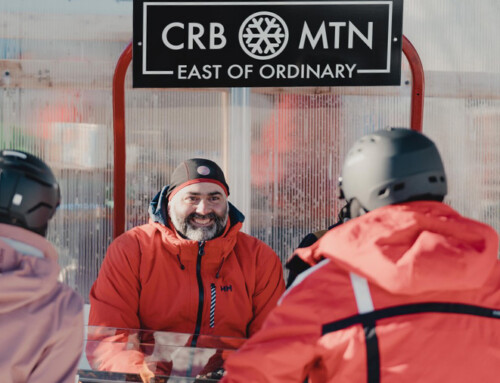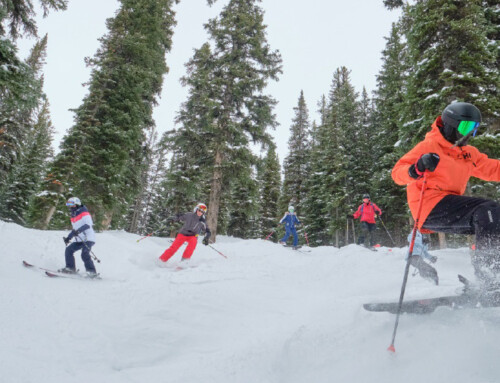Last November, Living Wage for Families BC released a report and an accompanying blog post titled “Soaring living costs cause major increases in the living wage across B.C.” The blog points out the obvious — right now, everywhere is expensive. But what’s alarming is that communities surrounding ski areas are as expensive, if not more, than big cities.
The cost of living is on the rise, as are living wage rates. So, what technically constitutes a “living wage”? The answer isn’t straightforward; it’s different than minimum wage and depends on the community.
“The minimum wage is the legal minimum you need to pay staff by the province, and it’s the same amount, regardless of where you are in the province. That’s legally mandated; you have to pay your staff at least $15.65 an hour,” explains Anastasia French, Provincial Manager at Living Wage for Families BC. “But what that doesn’t take into account is, in certain places, it’s more expensive to live than others. Living Wage for Families partners with both the Canadian Centre for Policy Alternatives and also 22 communities across the province to calculate what the living wage is locally. And that’s based on how much it costs to really pay for the basic essentials in life.”
The living wage is the hourly wage two parents working full-time need to earn to support a family of four. French explains that it affords a decent but still very modest standard of living without the extras many take for granted. Factors that go into calculating the rates include the cost of housing, food, childcare, and transportation, to name just a few.
French puts it simply: even the most affordable place to live in B.C. — the Fraser Valley— the living wage is still four dollars an hour higher than the minimum wage.
Big cities are generally the most expensive places to live. The living wage in Metro Vancouver went from $20.52 an hour in 2021 to $24.08 in 2022. However, French says that resort municipalities and amenity-based communities are just as high and, in some cases, higher. Revelstoke’s living wage jumped from $19.51 in 2021 to $23.60 in 2022; Fernie’s rose to $23.58; in Golden, home of Kicking Horse Mountain Resort, the living wage went from $19.46 in 2021 to $25.56 in 2022.
French says that the main driver behind these rates is the availability, or rather, the lack of housing in ski area communities.
“The living wage, at the moment, is calculated based on the assumption of a family. There just aren’t that many three-bedroom properties available in these places,” she says. “Equally, there’s not that much childcare available, so therefore, because there’s not much childcare or housing available, it is a lot more expensive than in places where there is availability.”
French also adds that the cost of food in ski communities can be more expensive.
Caroline Tremblay is the Project Coordinator at Community Economic Development in Golden, B.C., the non-profit organization responsible for helping calculate Golden’s living wage. She says that one of the reasons the living wage in Golden is so high is because the community only has two childcare centres and a handful of in-home licensed childcare providers. This is the case for many resort communities.
Tremblay says it’s important for Golden to determine a living wage because it helps guide community decisions, the economy, and helps start a valuable conversation — can economic stakeholders such as Kicking Horse Mountain Resort afford to pay their employees less than the living wage?
Small town, big pressures
“We are small communities, rural communities, living with big pressures like big cities do,” Tremblay says.
She says that there are ways employers can help alleviate these pressures. Making an effort to pay a living wage or close to it is a start. Additionally, if ski areas offered housing or childcare services for their staff, it could alleviate some of the financial strain of living in a resort community.
A media spokesperson for Resorts of the Canadian Rockies (RCR) says their resorts, like many others, are doing their best to tackle some of these issues.
“Resorts of the Canadian Rockies continue to try different ways to assist, like converting half a hotel to workforce housing, or fully renting a downtown hotel for staff housing.” In Revelstoke, the resort bought a local hostel to house seasonal staff. They also broke ground on the construction of staff housing at the resort this fall.
RCR says they’ve recently increased resort’s starting wages by nearly twenty-five percent, even before the new living wage study came out. The spokesperson says they will continue to monitor living wage calculations to support their staff and work with the communities surrounding their resorts toward place-based solutions.
Staff retention issues
Higher living wages put pressure on both the employees and employers, says French. For obvious reasons, it’s tough for workers to live in an expensive place. But it’s also a challenge for businesses. Businesses have reached out to Living Wage for Families BC to become recognized living wage employers because it helps them retain staff.
“Retention is probably one of the biggest things from a purely financial basis,” states Troy Hudson, General Manager at Sovereign Lake Nordic Club. “Having to rehire and retrain staff every year is a big cost and a big time waster, and we want to make sure that we can retain our staff annually and make sure they’re provided for with fair, competitive wages.”
Sovereign Lake Nordic Club is committed to paying its staff a living wage and is recognized for doing so by Living Wage for Families BC. Hudson says that as a non-profit, the rising living wage rates put an extra financial burden on the club, but it’s not enough to pay staff in ‘lifestyle’ benefits such as a free pass and first aid training. Providing complimentary season passes certainly help, but his staff can’t live off a lifestyle.
“People have to live fairly. Their cost of living is not going down. The cost of food is not going down,” he says. “It’s fine and dandy to provide a skiing lifestyle, but that doesn’t pay the bills and put food on the table and keep a roof over their head. So, it’s critical really for us to be able to provide that.”
Hudson says the club proudly displays that they are a living wage employer on the door of the club’s lodge. “I think it’s important that the public and our membership recognize that part of their season’s pass and day ticket prices ensure we can provide a fair wage and salary to all of our staff,” he says. “It’s just one piece of the bigger picture of a sustainable business model… that’s one of the things we strive for; making sure we can provide for our staff, but also provide long term for the club as a whole.”
What can ski areas learn from Sovereign Lake Nordic Club and can all Canadian ski areas sustain living wage rates? Paying a living wage is an admirable place for ski areas to start. It benefits employees as well as employers with regards to staff retention. With the cost of living on the rise everywhere, French and Tremblay say resort communities will continue to be affected in ways resembling the pressures big cities face, not those of rural small-town communities. Ski areas can help alleviate those pressures by providing resources for their employees to sustain the vibrant, diverse nature of their community.








